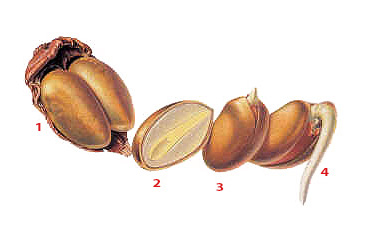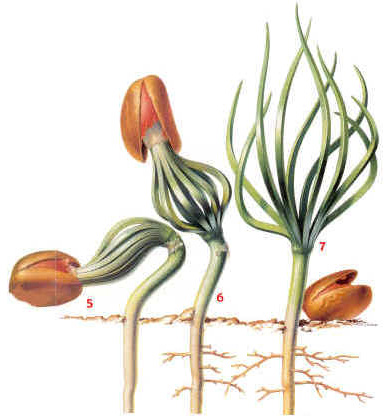A Seed Takes Root
- The embryo tree inside the seed.
- Complete with tiny leaves, stem, and a point that will become a root, the tiny embryo tree is embedded in a food supply called “endosperm”.
- The growing embryo splits the shell of the seed.
- Responding to gravity—whichever way the seed lies—the root probes its way toward the ground.
- As soon as the tiny root tip penetrates the soil, the tree is not only fixed in the ground, but is capable of absorbing water and mineral nutrients.
- The leaves emerge from the shell and create a supply of chlorophyll. Now the tree can manufacture its own food from water in the soil and carbon dioxide in the air.
- Hidden at the base of the leaves is the “terminal bud.” Within this cluster of actively dividing cells, all upward growth takes place.


Images courtesy of International Paper
The Living Forest

See what tree rings tell us about the life of a tree.
A Seed Takes Root

Pictorial timeline shows how a pinecone sheds a seed and becomes a tree.
Anatomy of a Tree

See a cross-section of the inside of a tree trunk.
